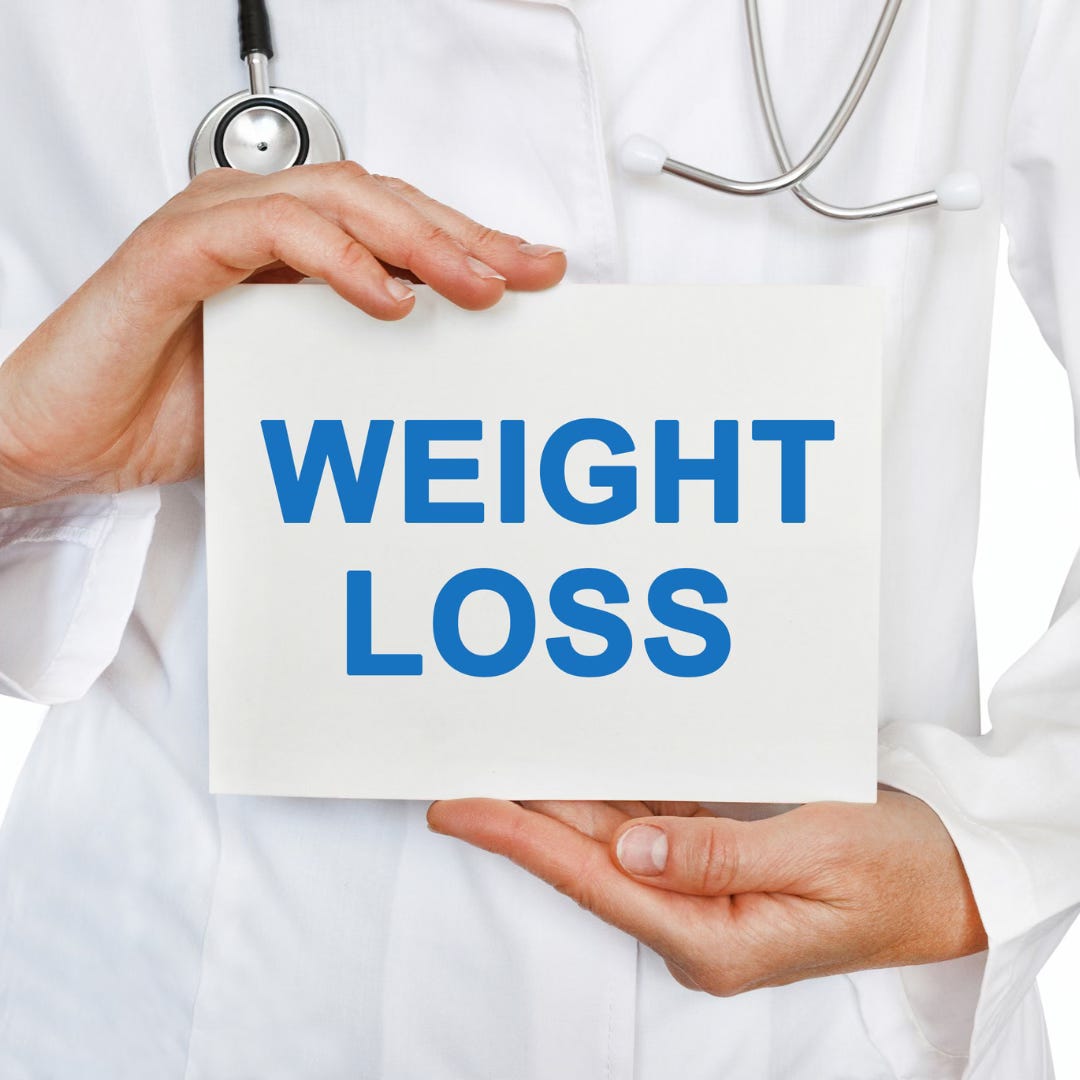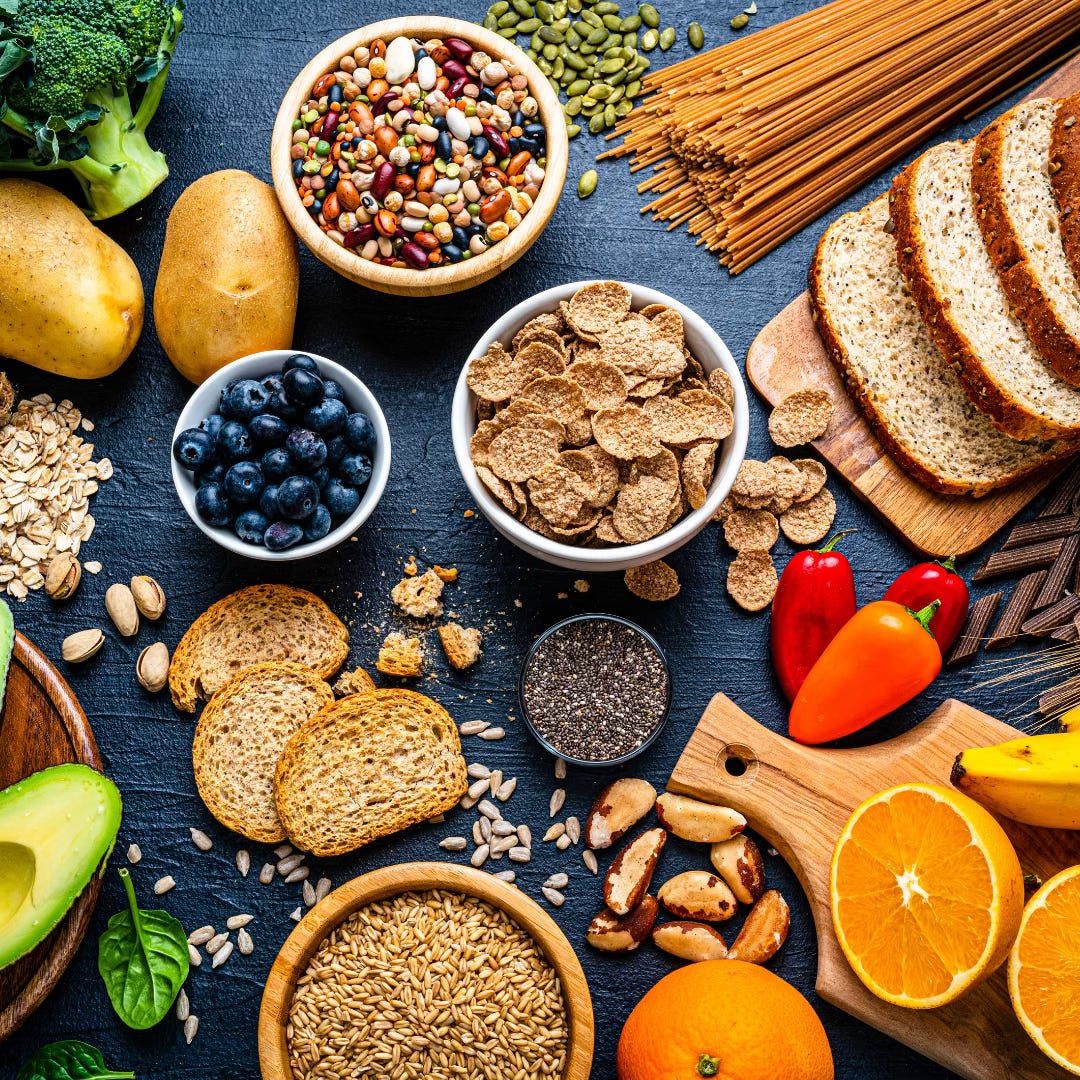Is Fermentable Fiber "Nature’s Ozempic?"
Find out how this kind of fiber plays a major role in weight control.
The allure of Ozempic and Wegovy for shedding pounds in midlife is understandable, particularly if you’ve gained weight during perimenopause, struggled with weight control for most of your life, or both. You just want the weight off, and fast, especially when you see the swift and dramatic changes in celebrities who’ve slimmed down with the popular medications.
Weight loss drugs aren’t for everyone, however. Ozempic and Wegovy are costly, have side effects, are in short supply (at least lately), and as far as we know, must be taken for the rest of your life. And though they appear to be magic bullets, weight loss medications are meant to work alongside a balanced eating plan and regular physical activity to promote overall health.
For some people, weight loss drugs are the only option, even though they’re considered appropriate for many people without a lot of weight to lose. Before you jump on the medication bandwagon, consider the role fermentable fiber plays in weight control.
What Are Ozempic and Wegovy?
Ozempic and Wegovy are brand names for semaglutide. The difference is in the dose and what each drug is intended to treat.
Wegovy is approved by the Food and Drug Administration (FDA) for weight loss and Ozempic is approved for managing type 2 diabetes, although weight loss often occurs. People over the age of 12 with a body mass index (BMI) of 27 or higher and at least one weight-related condition, such as type 2 diabetes, high cholesterol, or elevated blood pressure, or those with a BMI of 30 with or without a weight-related health issue qualify for Wegovy.
Ozempic and Wegovy are available only as prescription, once-a-week injections, but oral versions (pills or tablets) are on the horizon. Without insurance, one month of Wegovy (2.4 mg dose) costs about $1,350.00 in the U.S., while Ozempic (1.0 mg dose) runs about $900. There is no generic version of Wegovy or Ozempic.
How Semaglutide Works for Weight Loss
Semaglutide helps you feel fuller faster and for longer by delaying gastric (stomach) emptying and by communicating with the brain to curb your appetite. Semaglutide achieves these effects by mimicking a hormone called glucagon-like peptide 1 (GLP-1) that’s released when you eat. Though eating naturally activates GLP-1, it rapidly disappears after digestion and so does it’s ability to keep you from feeling hungry. Semaglutide reaches the brain faster and helps maintain higher levels of GLP-1 for days so you experience a more sustained sense of eating satisfaction.
As you probably know, there are downsides to weight loss medications. Semaglutide may result in side effects that can drastically reduce calorie and nutrient intake and lead to rapid weight loss, including stomach pain, belching, reflux, nausea, or constipation. In addition to shedding body fat, you can also lose substantial amounts of muscle mass because you don’t feel like eating or exercising. This is detrimental because a very low-calorie intake is often deficient in protein and many other nutrients that midlife women need to support gut, bone, brain, and muscle health.
How Fermentable Fiber Keeps You Fuller for Longer
Regular consumption of fermentable fiber, also called soluble fiber, may regulate appetite in the same way as semaglutide. Soluble fiber dissolves easily in water and it forms a gel during digestion which slows digestion and promotes feeling of fullness. But most of the benefits of soluble fiber occur in the colon.
Soluble fiber is fermented by the bacteria that live in your intestinal tract. The other major type of fiber, insoluble, matters for digestive health and other reasons, but it can’t be fermented.
Soluble fiber arrives in the colon where bacteria harvests its energy and nutrients to produce many different compounds that support health, including short chain fatty acids. Short chain fatty acids stimulate the production of GLP-1 and other hormones that regulate hunger such as peptide YY (PYY) and cholecystokinin (CCK) which may help reduce excess calorie intake without the side effects and cost of weight loss medications.
How to Eat More Soluble Fiber
A few small changes to your eating plan can go a long way for weight control and may even be particularly beneficial for losing visceral (belly) fat that tends to accumulate during the menopause transition. According to a study in The American Journal of Clinical Nutrition, adding foods rich in soluble fiber contributes to weight loss without cutting back on calorie intake. In another study published in Obesity, researchers found that an increased intake of soluble fiber combined with 30 minutes of exercise two to four times weekly slowed visceral fat gain over a 5-year period.
There is no suggested recommended intake for soluble fiber, but there is an expert recommendation for total fiber. The Dietary Guidelines for Americans say to eat at least 14 grams of fiber for every 1,000 calories consumed. That amounts to a minimum of about 26 grams of daily fiber on an 1,800-calorie eating plan and 28 or more grams of fiber if you’re eating 2,000 calories daily.
Most plant foods contain a mixture of soluble and insoluble fiber, but some are notable for having more of one kind. The following foods are particularly rich in soluble fiber:
Apples
Artichokes
Asparagus
Bananas
Barley
Berries (especially blackberries and strawberries)
Black beans
Brown rice
Carrots
Chia seeds
Flaxseed
Figs, dried
Grapefruit
Green beans
Kidney beans
Kiwi
Lentils
Oatmeal and oat bran
Passion fruit
Pinto beans
Peas
Popcorn
Quinoa
Soybeans (edamame)
Sunflower seeds
Sweet potato
White potato
Whole grain bread
Whole wheat pasta
Sample Fermentable-Fiber Eating Plan
It takes several hours after eating for soluble fiber to reach the colon. To derive the greatest benefits of higher levels of GLP-1 and other hormones that control hunger, you should choose foods rich in soluble fiber at every meal to maintain a constant presence of soluble fiber in the gut.
Below is a one-day eating plan that provides an example of how to include satisfying foods rich in soluble fiber and many other nutrients that midlife women need. The plan has less than 1800 calories (1761 to be exact), 34 grams of total fiber, nearly 110 grams of protein, and 100% of your daily calcium needs. There is some preliminary research suggesting that eating a combination of protein and calcium, such as dairy foods, stimulate greater GLP-1 release.
Breakfast
1/2 cup raw oats cooked with 1 cup 1% low fat milk or unsweetened fortified soy milk and mixed with 1 tablespoon chia seeds
1 medium apple with skin
Snack
6 whole grain crackers
1.5 ounces hard cheese, such as cheddar
Lunch
Turkey sandwich: 3 ounces reduced-sodium turkey deli meat, 2 slices whole wheat bread, 2 teaspoons mayonnaise
12 baby carrots
1 large orange
Snack
3 cups air-popped popcorn
Dinner
4 ounces cooked haddock or cod
1 cup three-bean salad
1/2 cup cooked brown rice or quinoa
1 cup blackberries or strawberries mixed with 3/4 cup plain fat-free Greek yogurt
Do Fiber Supplements Have the Same Effects as Semaglutide?
Psyllium husk, found in fiber supplements such as Metamucil, has been called the “poor man’s Ozempic,” but that’s not the case. Remember that I said earlier that soluble fiber forms a gel in water? That’s how psyllium husk works. When it dissolves in water, it causes a swelling that gives the impression of fullness, but that’s about where it ends in terms of appetite control. I favor soluble fiber from foods because the foods with soluble fiber are typically rich in other nutrients including protein, vitamins, minerals, and phytonutrients that support health.
What do you think? Will you give an eating plan rich in soluble fiber a try? Let me know!






Thank you! Appreciate it!
Thank you Sandy! That means a lot to me. Let me know if you have any questions.